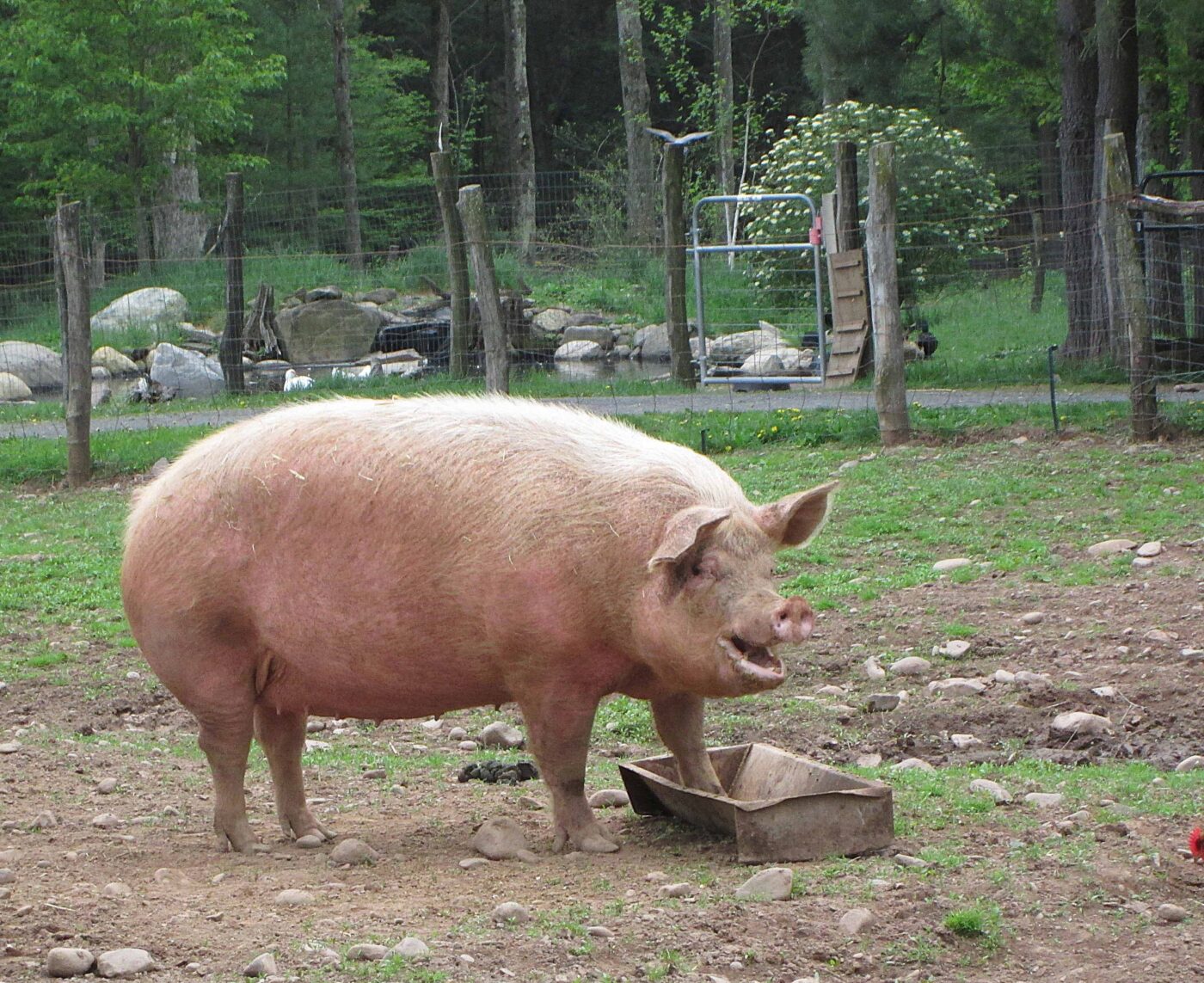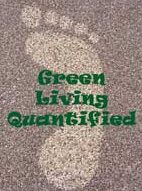
Recent research shows that one of the most effective ways to reduce environmental impact is to eat less meat, particularly beef. Below are lots of documented reasons why.
Meat Requires More Land and Resources – and Causes More Pollution
Consider the amount of food needed when eating crops directly versus feeding those crops to animals until they reach full size. It is clear that eating crops directly is more efficient, requiring less food, land, and water, and producing less waste and fewer greenhouse gas emissions than eating meat. Due to the inefficiencies inherent in meat production, reducing meat consumption leads to decreased corn and soy cultivation, which in turn lowers water use and reduces the application of fertilizers, pesticides, and herbicides. This reduction in chemical use significantly decreases water pollution and soil erosion. Additionally, using less fertilizer cuts down on the reliance on carbon-based fossil fuels. Moreover, cattle have digestive systems that generate high methane emissions through a process called enteric fermentation. Eliminating meat consumption also removes all manure waste with its climate change effects. Cutting down on meat is one of the most effective means to reduce your environmental impact.
Agricultural Land Sequesters Less Carbon Than Wild Lands
If existing animal feed farms are allowed to revert to natural landscapes, bushes and trees can regrow, significantly enhancing carbon sequestration both in the soil—as soil organic carbon—and within the vegetation itself. This rewilding process not only increases oxygen production but also supports the recovery of wildlife species heading toward extinction. The improvements generated from transformation of feed lands is known as the Carbon Opportunity Cost (COC) (Wedderburn-Bisshop, 2025). This factor is excluded from the UN’s current assessments, which estimate agriculture’s contribution to greenhouse gas emissions at 14-18%. Recent scientific research indicates that the UN’s figures underestimate agriculture’s true impact; when this and other missing factors are considered, agriculture emerges as a larger source of total greenhouse gas emissions than fossil fuels. However, reviewing the UN’s estimates provides a useful starting point, followed by an exploration of insights from current scientific research.
UN FAO Conservative Estimates: The United Nations (UN) presented a graph in the UN Intergovernmental Panel on Climate Change (IPCC) AR5 report (Smith et al., 2014, p. 836). Below, I have recreated their Figure 11.9, focusing exclusively on the components related to food, while excluding non-food sectors such as biofuels, forestry, and other non-food industries.
To understand the diagram below, note that land use for farming is displayed on the far left, while consumption—such as at home or in restaurants—is shown on the far right. Between these points are livestock raising and food processing stages, including packaging and sales. Red arrows represent the quantity of food transferred between each stage, measured in gigatons (Gt) or billions of tons of dry matter. Black downward arrows indicate the amount of waste generated by each process, also measured in gigatons.

Global Human Food: 81.7% of Human Diet is Grown by 36% Cropland (and 0% of Grazing Land)
The diagram above and below illustrates that of all cropland, 36.2% of crops are used directly for human food, while the remaining 63.8% is allocated to livestock feed. Although only 36.2% of crops are consumed directly by humans, these crops account for 81.7% of the global human diet. The total input of crops and grazing land for ruminants (cows, sheep, goats) amounts to 6.22 billion metric tons (Gt = gigatons) of dry matter. However, this input yields only 0.14 billion tons of meat, resulting in an efficiency rate of just 2.25% (0.14/6.22). In comparison, the efficiency rate for pigs and poultry is somewhat higher at 6.74%.

Considering total Earth land use, according to the original UN IPCC diagram, cropland accounts for 12% of all Earth’s land, while grasslands and grazing occupies 35%. If instead grazing and feed crop land was primarily used for reforestation and re-wilding to accomplish carbon sequestration, much of climate change could be reversed.
The inefficiency of meat production is often measured by comparing the edible metabolizable energy in meat or dairy products to the total energy contained in the animal feed. On a global scale, other researchers (Herrero et al., 2015) put average efficiencies at roughly 1% for ruminant meat, 7% for dairy, and 10% for pork and poultry.
Animal Waste is Not Treated by Sewerage Systems; Pollutes Locally
Animal waste from livestock accounts for 55% of total agricultural waste, which does not include waste from cropland, food processing, and consumption related to all foods, including meat. Unlike human waste, manure is not treated through sewers and tends to accumulate locally, causing pollution in rural communities. Another key opportunity to improve food efficiency is reducing waste at the consumer level—homes and restaurants—which contributes 15.4% of total agricultural waste.
Cheese Requires 5,645 Liters Water per Kilogram of Cheese
This diagram does not include the water used for livestock activities such as watering animals, irrigating feed crops, and meat processing. Agriculture consumes 70% of the Earth’s freshwater resources. Renewable freshwater supplies are declining in most countries, as detailed at https://ourworldindata.org/water-use-stress. Agriculture accounts for up to 40% of water use in the Northern Hemisphere and between 60-98% in the Southern Hemisphere, according to Our World in Data citing the World Bank: U.S. 40%, India 90%, China 62%. Producing one kilogram of beef requires 1,451 liters of water, while dairy beef needs 2,714 liters. Water use for lamb and pork falls between these figures. Farmed fish and nuts require even more water than beef, and cheese tops the list at 5,645 liters per kilogram. Average water requirements per kilogram can be found here: https://ourworldindata.org/grapher/water-withdrawals-per-kg-poore.
UN IPCC Does Not Factor In Livestock Breathing or Full Impact of Methane to Climate Change
Recent Research: Increased Environmental Impact. Goodland and Anhang (2009) highlight additional critical issues related to animal agriculture. Livestock, totaling around 60 billion globally, far outnumber humans, who number approximately 8 billion, and they exhale carbon dioxide.
Secondly, methane is a significantly more potent greenhouse gas over a 20-year period—72 times more impactful than CO2—compared to the 100-year time frame (25 times CO2) used by the UN FAO (Goodland and Anhang, 2009). These (and other) factors increase the total contribution of animal agriculture to 51% of global greenhouse gas emissions in the short term. It is important to note that these elements—animal respiration and short-term methane effects—are not included in my dietary impact comparisons across vegan, vegetarian, EU, UK, and US diets, which rely on estimates from the UN FAO and Poore & Nemecek.
Considering greenhouse gases and climate change, the two largest agricultural sources listed by the IPCC AR5 are enteric fermentation (32-40%) and emissions from agricultural soils (27% or more). Enteric fermentation produces methane, a powerful greenhouse gas, released through cow burps and farts. Manure and fertilizers applied to agricultural soils contribute nearly the same amount of greenhouse gases. Additional agricultural emissions come from paddy rice cultivation (9-11%), biomass burning (6-12%), and manure management (7-8%) (Smith et al., 2014, p. 823). Animal agriculture is entirely responsible for enteric fermentation and manure management emissions, and significantly contributes to emissions biomass burning (which involves burning forests to clear land for pasture or crops). For detailed greenhouse gas emissions by individual foods, visit Our World in Data: https://ourworldindata.org/environmental-impacts-of-food.
UN IPCC Does Not Factor In Cumulative Effect of Cutting Down Forests and its Impact On Carbon Sequestration
If we consider that approximately 80% of agricultural land is dedicated to animal agriculture (Herrero et al. 2015) rather than direct human plant consumption, rewilding much of this land could lead to significant carbon sequestration. However, greenhouse gases do not vanish within a single year; carbon remains in the atmosphere for over a century. There is a cumulative effect of having chopped down forests and natural grasslands over many years, when carbon could have been sequestered in current farmland, and where carbon effects of slash-and-burn and other agricultural practices in recent history have not yet disappeared.
A new modeling method, Effective Radiative Forcing (ERF), evaluates the accumulation of greenhouse gases from 1750 to 2020. ERF attributes 60% of Earth’s greenhouse gases to agriculture, with animal agriculture responsible for 86% of that total. ERF, published by scientist Wedderburn-Bisshop (2025), considers this cumulative effect and measures the energy flow through the Earth’s atmosphere. In comparison, the UN FAO accounts only for land changes from forest to cropland in the year the change occurs, while Poore and Nemecek (2018B) apply a 20-year amortization. Although the UN FAO and Poore & Nemecek conducted remarkably thorough research, this difference in methodology highlights a greater impact of meat consumption on greenhouse gas emissions than shown in my per-person dietary impact graphs, suggesting my figures underestimate the true effect of meat-related emissions.
Increasing Population and Rising Meat Consumption Threaten Remaining Wild Lands
Warning for the Future. These UN IPCC statistics reflect the average global citizen. However, land use, waste, and food consumption figures do not represent the higher averages seen in developed nations, where meat consumption is significantly greater. According to the UN Food and Agriculture Organization (FAO) database (2024), people in developed countries consume an average of 56 kg of meat per person annually; Americans consume about 82 kg per year, while those in developing countries average just 22 kg. If developing nations adopt the meat-heavy diets of developed countries, their large populations will have a profound negative impact on the environment. Increased meat consumption could more than double the demand for water and land, leading to deforestation and further loss of wildlife habitats. Moreover, not only will per capita demand rise in heavily populated developing regions, but the global population is also projected to grow from 8.2 billion in 2025 to 9.6 billion by 2050 and 10.9 billion by 2100. While renewable energy advancements may reduce some greenhouse gas emissions, the surge in meat consumption worldwide threatens to undermine progress made in lowering fossil fuel use.
References
Michael Clark and David Tilman (2017) Comparative analysis of environmental impacts of agricultural production systems, agricultural input efficiency, and food choice. Environ. Res. Lett. 12 (2017) 064016, IOP Publishing.
FAO (2023) The State of Food and Agriculture 2023 – Revealing the true cost of food to transform agrifood systems. Rome.
https://doi.org/10.4060/cc7724en
Gerber PJ, Steinfeld H, Henderson B, Mottet A, Opio C, Dijkman J, et al. Tackling climate change through livestock. Rome: Food and Agriculture
Organization of the United Nations (FAO); 2013.
R Goodland and J Anhang (2009) Livestock and Climate Change: What if the key actors in climate change are… cows, pigs, and chickens? World Watch, Worldwatch Institute.
Greger, M., & Stone, G. (2016). How Not To Die. Macmillan.
M Herrero, S Wirsenius, B Henderson, C Rigolot, P Thornton, P Havl´ık, I de Boer, and P. J. Gerber (2015) Livestock and the Environment: What Have We Learned in the Past Decade? Annu. Rev. Environ. Resour. 2015. 40:177–202.
IPCC (2014) Climate Change 2014: Mitigation of Climate Change. Contribution of Working Group III to the Fifth Assessment
Report of the Intergovernmental Panel on Climate Change [Edenhofer, O., R. Pichs-Madruga, Y. Sokona, E. Farahani, S. Kadner, K.
Seyboth, A. Adler, I. Baum, S. Brunner, P. Eickemeier, B. Kriemann, J. Savolainen, S. Schlömer, C. von Stechow, T. Zwickel and J.C.
Minx (eds.)]. Cambridge University Press, Cambridge, United Kingdom and New York, NY, USA.
Lincke, S. & Wolf, J. (2023). Dietary modeling of greenhouse gases using OECD meat consumption/retail availability estimates. International Journal of Food Engineering, 19(1-2), 37-48. https://doi.org/10.1515/ijfe-2021-0352
OECD (2024). OECD Data Explorer. From: https://data-explorer.oecd.org.
PCRM (2024). Protein: Power Up with Plant-Based Protein. Physicians Committee for Responsible Medicine. From: https://www.pcrm.org/good-nutrition/nutrition-information/protein.
J. Poore and T. Nemecek.(2018) Reducing food’s environmental impacts through producers and consumers. SCIENCE, 1 June 2018, 360(6392) 987-992. American Association for the Advancement of Science.
J. Poore and T. Nemecek (2018B) Supplementary Materials for Reducing food’s environmental impacts through producers and consumers. SCIENCE. From: https://www.sciencemag.org/content/360/6392/987/suppl/DC1.
G Wedderburn-Bisshop (2025) Increased transparency in accounting conventions could benefit climate policy, Environ. Res. Lett. 20 044008. DOI 10.1088/1748-9326/adb7f2. From: https://iopscience.iop.org/article/10.1088/1748-9326/adb7f2.
